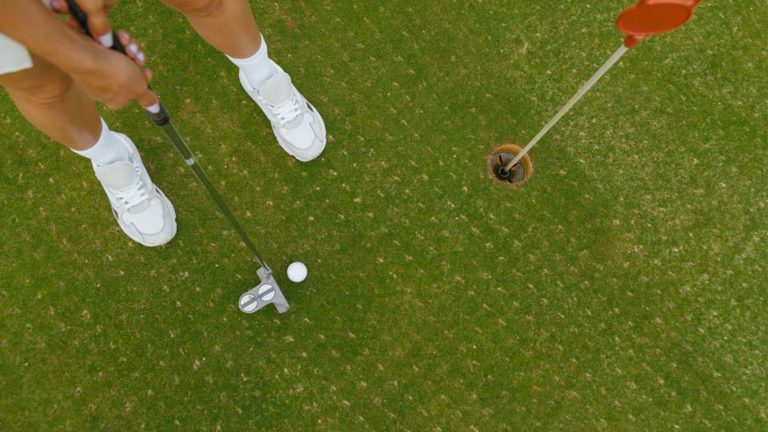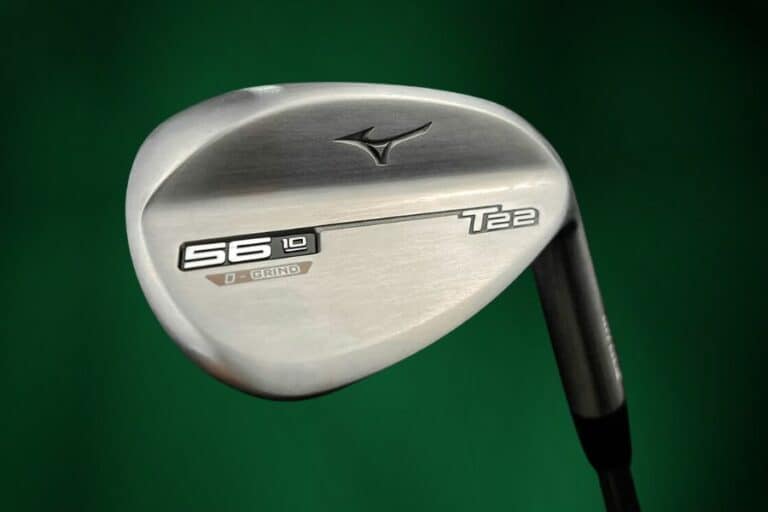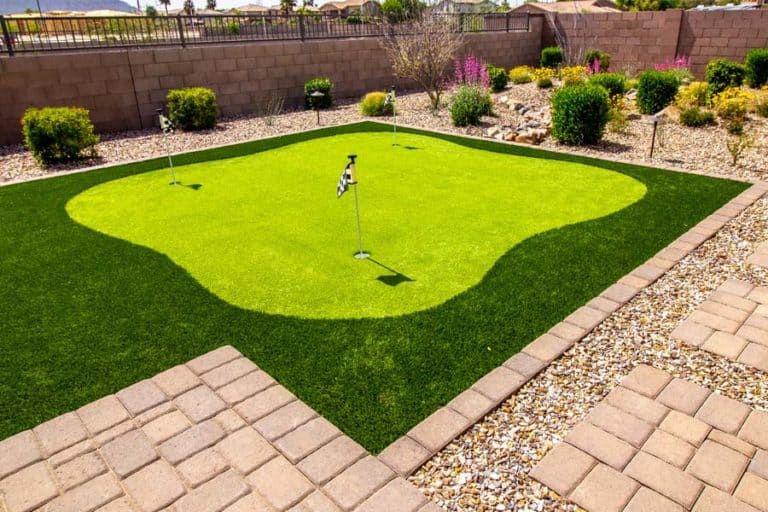How Fast Does A Golf Ball Travel?

Understanding the role of the ball speed can have a game-changing impact on your performance.
The golf ball’s speed may depend on several factors. These can make it challenging to attain the perfect shot.
This article explains the importance of golf ball speed and its impact on the game.
How fast does a golf ball travel?
A golf ball can reach up to an astonishing 250 feet per second, depending on how hard it is hit.
Professional tour players have been known to swing with an average ball speed of 160-190 miles per hour.
However, there are some rules for the maximum speed a golf ball can reach.
According to the USGA (United States Golf Association), the maximum ball speed is around 250 feet per second, equating to 170 mph. Both the USGA and R&A mandate that all golf balls have a maximum mass of 1.620 ounces and a minimum diameter of 1.680 inches.
Although most golf balls are designed to achieve maximum ball speed within the USGA’s legal limits, illegal balls are available that travel faster and cover a tremendous distance. Thus, this limit was set in place to prevent unfair practices.
Here are some of the golf speeds for reference for your next game:
- Scratch or Better – 161 mph
- 5 HCP – 147 mph
- 10 HCP – 138 mph
- Average Golfer (14.5) – 133 mph
Factors that affect a golf ball’s speed
Several other factors affect how far and fast a golf ball travels through the air. Here are some of the most important ones:
1. Club head speed (Impact speed)
The faster your club head is at impact, the faster the ball will travel. The higher the club speed, the further you will hit.
For instance, an average PFA tour golfer may have a swing speed of 113 with a ball speed of 167 with a driver.
On the other hand, an average amateur golfer may have a swing speed of 98 with a ball speed of 145 with a driver.
2. Smash factor
Smash Factor is essentially a measure of the energy transmitted from your golf club to the ball you are hitting.
To calculate Smash Factor, simply divide the ball speed by the club speed.
The higher the smash factor, the better the energy transfer.
A club with a higher loft will generally have a smash factor lower than that with a lower loft.
3. Hitting the sweet spot
Ensuring you hit the sweet spot on the clubface will result in your golf ball being launched with more force.
The sweet spot is located towards the center of your clubface and will result in a far more consistent ball flight.
Missing the sweet spot by even a slight margin can cause an extreme decrease in the distance, affecting your entire golf game. This massive reduction has serious implications for how you play the sport.
4. Golf ball design
The golf ball’s construction determines how far and how fast it travels.
For instance, a golf ball with a lower compression rating will travel further than a high one.
Additionally, a golf ball featuring more dimples will be more aerodynamic and travel further than one with fewer.
Therefore be sure to research well before purchasing a golf ball, as the right design can provide higher ball speeds.
5. Launch angle
If you want to maximize your golf ball’s speed, it is crucial to ensure you have the correct launch angle.
A launch angle of between 10 and 15 degrees is ideal for maximizing ball speed as well as distance.
The height and distance of a shot are largely dependent on two critical elements: ball speed and launch angle.
The Launch Angle of a ball is the trajectory it takes off at above ground level.
6. External factors
External factors are uncontrollable by humans. Some typical external factors are weather, wind direction, air resistance, or gravity.
Weather or wind are avoidable by observing the weather and choosing to play on days with clear skies.
Consequently, you must consider these elements while calculating the speed.
7. Player’s skills
A more experienced golfer may be able to generate an accurate golf swing, more power, and club speed.
This leads to higher ball speeds and greater distances.
On the other hand, an amateur golfer may lack the ability to do so and thus have lower ball speeds and shorter distances.
Apart from technical abilities, a player’s strength and power determine the velocity with which they can hit the ball.
Achieving the perfect hit requires just the right amount of strength. Shots that are too hard or not hard enough will fail to gain enough speed and travel far enough.
Golf ball speed stats
Based on the analysis of the stats mentioned by Trackmangolf, we can sum up the golf ball speed as follows:
PGA Tour
| Club Type | Swing Speed | Ball Speed |
| Driver | 113 | 160 |
| 3 Wood | 107 | 158 |
| 4 Iron | 96 | 137 |
| 7 Iron | 90 | 120 |
| Pitching Wedge | 83 | 102 |
LPGA Tour
| Club Type | Swing Speed | Ball Speed |
| Driver | 94 | 140 |
| 3 Wood | 90 | 132 |
| 4 Iron | 80 | 116 |
| 7 Iron | 76 | 104 |
| Pitching Wedge | 70 | 86 |
Amateur Tour
| Club Type | Swing Speed | Ball Speed |
| Driver | 98 | 145 |
| 3 Wood | 94 | 137 |
| 4 Iron | 83 | 121 |
| 7 Iron | 79 | 109 |
| Pitching Wedge | 71 | 90 |
Determining the ball velocity
The formula to calculate your ball velocity is an excellent way to gain insight into your performance and track your progress.
The golf ball’s trajectory will vary depending on the golfer’s skills, swing speeds, and finesse.
However, there is a fixed formula for calculating its moving speed.
Ball velocity = (clubhead speed x coefficient of change) / (1.0 + (ball mass/clubhead mass))
(considering the average weight of most balls is around 1.62 oz.)
In addition, you can also utilize mobile apps or a swing caddy for fast and accurate results.
Moreover, one of the easiest ways to find your ball speed is to hit some shots on a golf simulator till you achieve your desired ball speed.
Conclusion
Golfers should understand how fast a golf ball travels as it can help them get their desired distance and enhance their game. Several factors impact the ball’s speed, and understanding these elements will help you hit finer and more speedy golf shots.
Dedicated practice and a thorough understanding of your tools and environment can maximize your performance’s efficiency for desired results.








